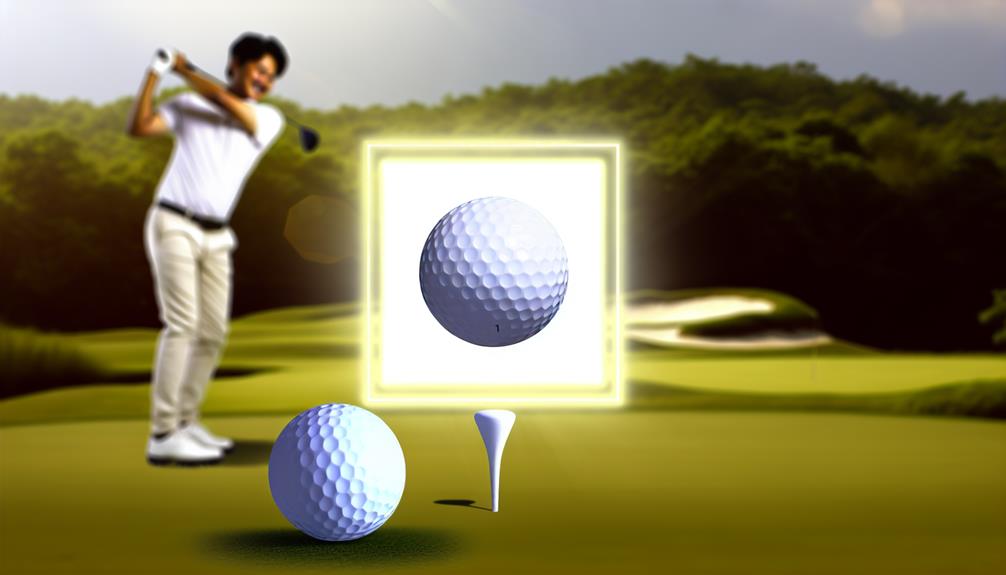Just like deciphering an intricate piece of classical music, understanding golf's putting rules can seem daunting, but it's not beyond your grasp.
You're about to embark on a journey through an essential but often misunderstood aspect of golf. This 3-point guide will break down the rules, etiquette, and common mistakes of putting.
It's not just about tapping the ball; it involves strategy, precision, and respect for the game.
So, are you ready to unravel the mysteries of the green and elevate your next golf outing?
Let's begin by understanding the basics of putting.
Understanding the Basics of Putting
To get a firm grip on the game of golf, you'll need to master the basics of putting, a critical aspect that can make or break your performance on the green. Understanding your putting grips and training drills are essential to achieving this mastery.
Your putting grip should be comfortable, yet firm. It's a delicate balance to strike, but an important one. There are multiple types of grips you can use, like the reverse overlap or the claw grip, each with their unique advantages. Experiment with different grips to find the one that suits your style and delivers the best results.
Training drills, on the other hand, are your ticket to consistency. They help you develop muscle memory, which is vital in putting. A popular drill is the 'gate drill', where you set up two clubs on the ground in a gate-like fashion and practice putting the ball through the 'gate'. This drill improves your aim and helps you gain more control over the ball.
Key Rules in Golf Putting
Once you've honed your grip and practiced your drills, it's vital you get familiar with the key rules of putting in golf to ensure your efforts aren't wasted on the green. Knowing the game's regulations will refine your putting strategies and help you make informed equipment selection choices.
Firstly, the ball must be addressed with the putter head behind it. You can't hit the ball twice in one stroke; it counts as two strokes if it happens. Now, if your ball moves after being addressed, it's a one-stroke penalty, unless it's caused by an outside force or it moves after a stroke.
Secondly, it's crucial you understand the flagstick rule. You're allowed to leave the flagstick in the hole while putting, but if your ball hits it, you'll be penalized.
Lastly, don't forget about the equipment rules. The putter's length must be at least 18 inches, and it can't be designed to give any undue advantage. For instance, it can't have features that help with alignment, like a laser.
Etiquette and Sportsmanship on The Green
Navigating the green requires not only knowledge of golf's putting rules, but also a strong understanding of etiquette and sportsmanship. It's about respect for the game, the course, and your fellow players. One key aspect of this is green maintenance. You should always repair pitch marks, replace divots, and rake bunkers. It's about leaving the course in the same or better condition than you found it.
Player interactions are also crucial. Always remain silent during another player's swing and avoid walking in their line of sight. Be aware of your shadow's position, as it can distract other players. Furthermore, wait until all players have holed out before exiting the green.
Good sportsmanship is a must. Congratulate others on good shots, remain composed during poor ones, and keep the game moving at a good pace. Remember, it's not always about winning but playing the game in the right spirit.
Common Putting Mistakes and Violations
While honoring the etiquette and sportsmanship is vital, it's equally important to steer clear of common putting mistakes and violations that could cost you crucial points in the game. One blunder to watch out for is 'double hitting', where your club strikes the ball more than once during a single stroke. This error, even if accidental, can lead to a stroke penalty.
Another typical faux pas is 'hitting a moving ball'. Under the rules of golf, if your ball is still in motion from a prior stroke, you must wait for it to come to rest before taking your next shot. Ignoring this rule can result in a two-stroke penalty.
Now, let's move on to the violation consequences. The penalties for these infringements can range from one stroke to disqualification, depending on the severity. So, it's crucial to understand and follow the rules to avoid these penalties.
Beneficial Techniques for Successful Putting
To improve your game and avoid common pitfalls, it's essential to master certain putting techniques that can significantly enhance your performance on the green.
A key aspect is grip styles. Whether you opt for the 'reverse overlap', 'cross-handed', or 'claw', your choice should offer comfort and control. The 'reverse overlap' is the most traditional, where the index finger of your top hand overlays the fingers of your bottom hand. 'Cross-handed' is just the opposite, while 'claw' involves gripping the putter with your top hand and resting the putter shaft between your thumb and forefinger of your bottom hand.
Ball alignment, another critical technique, can make or break your putting game. Align the logo or line on your ball with the intended path. This visual guide will help keep your putter face square at impact, ensuring your ball travels on the desired line.

